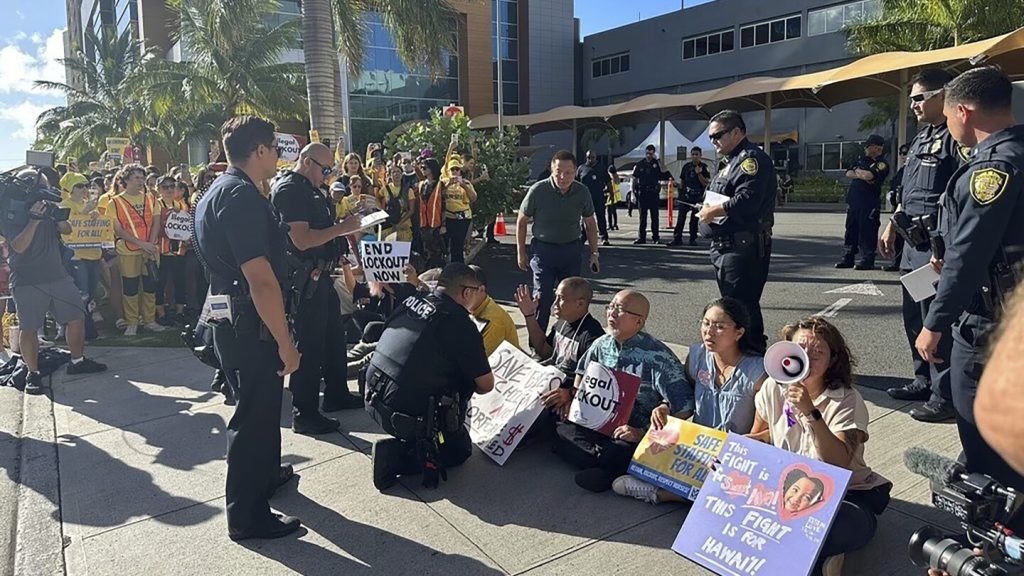Approximately ten individuals, including a newly elected state lawmaker, were arrested outside Hawaii’s sole women’s and children’s hospital on Monday. This came amidst a lockout of more than 600 unionized nurses who had gone on a one-day strike during contract negotiations. The nurses have been demanding safer nurse-patient ratios, with their contract having expired last year. Despite ongoing protests and negotiations, the hospital has continued to provide care with temporary staff.
The Hawaii Nurses Association president, Rosalee Agas-Yuu, emphasized that the nurses simply want to return to taking care of patients at the bedside. Contract negotiations were set to continue on Monday as both sides worked towards resolving the issues that led to the strike and subsequent lockout. Demonstrators were present at the hospital entrance to highlight the situation as buses with temporary out-of-state nurses arrived. Hospital CEO Gidget Ruscetta stressed the need to maintain access to the medical center for the community.
Among those arrested was Kim Coco Iwamoto, a Democrat serving as a state House representative for a part of Honolulu. Iwamoto, who was cited for obstructing, expressed her intention to address staffing ratios for nurses in the state Legislature. Another individual arrested was Ikaika Hussey, who recently secured the Democratic primary for a state House seat. Hussey described their actions as a form of civil disobedience, influenced by the hospital’s founder, Queen Kapi‘olani, whom he believed would disapprove of the current situation.
Lori Treschuk, a 77-year-old retired nurse who had previously been arrested at protests for other causes, was also among those arrested. Treschuk expressed empathy for the nursing staff, acknowledging the stress they face, especially amidst the ongoing lockout. The situation has drawn attention to the broader issues of labor relations and patient care standards within the healthcare system. While the demonstrations were aimed at raising awareness and advocating for the nurses’ concerns, the hospital emphasized the need to ensure that patient care is not compromised.
The ongoing saga at Kapi‘olani Medical Center for Women & Children highlights the challenges faced by healthcare workers, particularly in advocating for improved working conditions and patient care standards. The unionized nurses’ demands for safer nurse-patient ratios reflect a broader issue within the healthcare industry, where staffing shortages and workload pressures can impact the quality of care provided. As negotiations continue between the nurses’ union and the hospital management, the community remains hopeful for a resolution that prioritizes both patient safety and the well-being of healthcare workers.
The arrests of individuals, including elected officials, outside the hospital served as a symbolic gesture to draw attention to the plight of the unionized nurses and their demands for better working conditions. The involvement of political figures like Kim Coco Iwamoto and Ikaika Hussey underscored the broader societal impact of the labor dispute at the hospital. With continued pressure from both the nursing community and their supporters, there is hope for a positive outcome that addresses the concerns raised by the nurses and ensures a safe and effective healthcare environment for all stakeholders involved.


